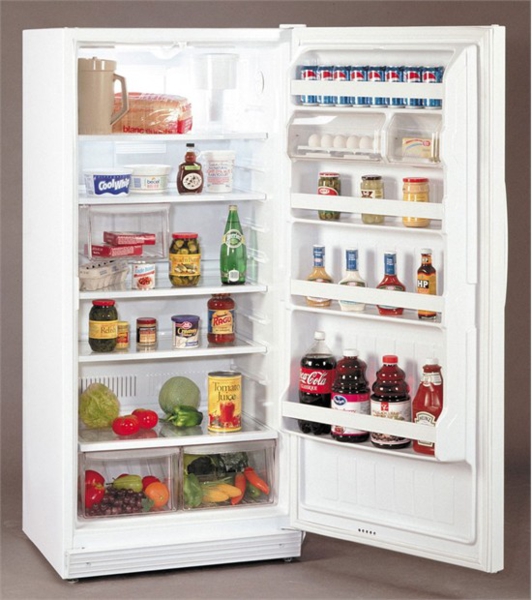Moving a refrigerator can be a demanding and strenuous task. It can also be more than a little intimidating. When you’re at that back-breaking point you can find yourself asking what in the world possessed you to want to do this in the first place.

However, it doesn’t have to be this way. There is hope that you can accomplish this feat without it requiring a trip to the emergency room. Just read the tips below:
1. Supplies
You will need the following supplies in order to accomplish your task:
1. Large moving dolly — this type of dolly can tolerate hauling heavy equipment without falling apart. This can be vitally important if you have to navigate stairs and for sliding the refrigerator into a moving truck.
2. Rope or strong cord and/or moving straps — You will need to make sure that the refrigerator doors are going to stay closed during transport, so you should tie them shut by wrapping the cord around the refrigerator. In the case of double-doors, tie them together tightly. If you prefer, tape will also do the job, but a word of caution, when you remove the tape, you may dull the surface or end up taking the paint off altogether.
Also, the refrigerator can be tied to the dolly using the moving straps, if you would rather do it that way.
3. Cleaning supplies — Once the fridge is empty you know what to do with these.
4. Plain paper or moving blankets — These are for wrapping the shelves inside your refrigerator so that they won’t be damaged while your moving. Take your choice, either paper or blankets works just fine. Also be sure and label the shelves.
2. Empty the Refrigerator
Once you’ve collected your supplies you’re ready for the next step. That’s to clean out the contents of your refrigerator, including the freezer. Sometimes this step can seem more difficult than actually moving the fridge, but keep a stiff upper lip and tackle it with determination.
Either toss or give away any perishable items and pack up what you want to take along. If you have any magnets or other items pasted to the door of the refrigerator then remove them and pack them up.
Okay, so far so good. Now take a deep breath and move on to the next step.
3. Unplug the Refrigerator and Defrost Freezer
Since this process can take anywhere from 6-8 hours a smart move would be to do this overnight. In the morning all you have to do is wipe it out which shouldn’t take too long.
4. Remove Shelves
5. Turn Off Power and Wrap Cord
Make that the cord is safely out of harm’s way and won’t get caught while the fridge is being moved.
6. Secure the Doors
7. Moving the Refrigerator
For this part it’s usually easier to have an extra pair of hands to help you. Ease the refrigerator away from the wall. Carefully slip the dolly underneath. You can also tie the refrigerator to the dolly with moving straps if that makes you feel better.
After the refrigerator is securely in position, tilt it back, with one person holding it from the back and one person in the front. If it is possible to have a third person on hand in case of emergency, it certainly wouldn’t hurt to do so.
Now the real fun begins. Maneuvering the fridge down the stairs. Now this might seem like a task requiring titanic efforts, but it really won’t be so bad. Not that bad anyway. First of all, a simple hint, place the refrigerator on the steps bottom first. Gradually lower the dolly down one step at a time.
Getting the refrigerator onto the moving truck shouldn’t be difficult, just a matter of pulling it up the ramp, and a little pushing and tugging here and there.
8. Moving the Refrigerator Into its New Home
Don’t plug your refrigerator in immediately after putting it in its new space. It’s advisable to let it sit for up to three hours. The reason is that the fluids need time to flow back into the compressor. This action is essential to the cooling mechanism.
Also, don’t rush to put items into the refrigerator. It won’t be ready to use immediately just because it’s plugged in. It needs time to reach the correct temperature. It depends on the refrigerator, but some can take as long as three days before they reach that critical temperature.
<em>Article written by Isaac Atia, on behalf of <a href=”http://www.premier-movers.com”>NJ Movers</a>. Isaac is the Founder and Managing Editor of Howitoo.com – <a href=”http://www.howitoo.com/”>how to do things</a>. As part of his website’s premium service, Isaac offers <a href=”http://www.howitoo.com/sponsored-posts”>sponsored posts</a></em> which may help increase your rankings on Google and other search engines.

